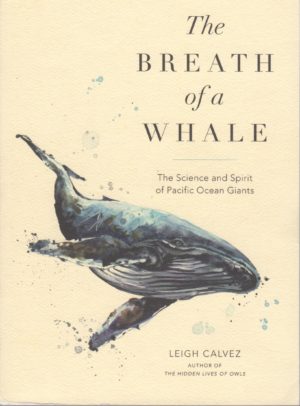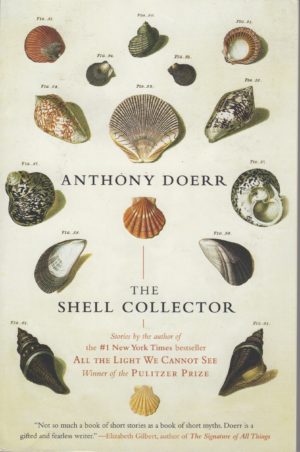
I’d always heard about Raymond Carver, hailed as the champion of late 20th century minimalism in short fiction. But I’d never read any of his work. He’s a rare animal, in terms of a fiction writer in that, so far as I am aware, Carver never completed a novel. His entire career and catalog of work, most of which is included in this volume, involves that dying animal, the short story. One of my kids gifted this book to me (at my request) for the past Christmas and it was the first of four books I read while spending two weeks on the Garden Island.
My take on Carver’s writing is, that, at times, it is simply magnificent. “The Bath” and its various permutations, “The Ducks”, “So Much Water So Close to Home”, and “Tell the WomenWe’re Going” all stand up to Hemingway’s or Welty’s or Lawrence’s best. Carver is not a happy writer, writing quaint little vignettes of domestic life; few, if any, of the characters are happy or have marriages that are fulfilling, complete, or loving. There is much turmoil, likely mirroring that of Carver’s own personal life, displayed in these tales. But more than the fine storytelling held within the hardcovers of this tome, it is the side-by side comparison of Carver’s original work to the edited versions of his stories, pared down, sparse snippets of the efforts, all accomplished at the brutal hand of Carver’s editor, Gordon Lish, that makes this collection intriguing to a writer like me. Lish’s scalpel is evident in many of final versions of the stories but it is most prominent in the gruesomely engaging “Tell the Women We’re Going” where two young married men chase after two teenaged girls on bicycles to a bad end. As published, the tale runs 6 and 1/2 pages. Carver’s original, a far more detailed and sinister version of the themes Lish reined in, weighs in at 13 and 1/2 pages! So the question one must ask, if we’re considering an original of nearly twice the length versus the final, edited cut of a story, Who was actually the writer, the originator of the sparse, crisp, curt writing for which Carver is applauded and lionized?
Despite the editorial quibble I raise above, a worthy addition to any reader’s library.
4 stars out of 5.

I picked up this beautifully bound and illustrated trade paperback at the Talk Story Bookstore, the only bookstore on Kaua’i. I was, very simply, drawn in by the cover art and the extremely high quality of the binding and presentation. That’s an interesting way to buy a book by an author you’ve never heard of, I’ll grant you. But, given that we were searching for humpback whales during our stay on the island, and given the book appeared to be about, you guessed it, humpback whales, I took a chance. I’m glad I did.
Calvez has spent her adult life studying whales, particularly the whales of the Pacific. She’s spent time along the mainland coast, in Oregon and Washington State, and in the Hawaiian Islands, mostly engaged in researching the lives and habits of blue whales, humpbacks, and orcas. There’s no question, upon reading her prose, she’s a gifted and concerned environmentalist and scientist. But more than that, she is also a gifted writer:
Blue whales can live to be ninety years old. Do they remember being hunted in the 1960s and 1970s in their historic feeding areas, so they simply don’t go there anymore? Do they remember the days when they could hear others of their kind from a thousand miles away rather than one hundred miles or so today, due to the levels of noise pollution in the oceans? Why is it they have moved closer together? Is it so that they can hear one another?
Her prose is elegant, well paced, and yet, conveys the details of her expertise without weighing down the narrative with excessive facts and science. And, she is, despite all the issues confronting whales and dolphins and their kin today, hopeful about the survival of these magnificent mammals, which in this very complex and troubled world, is in itself, a reason to read the book.
4 and 1/2 stars out of 5.

Richard Wagamese was, according to the back jacket of this enthralling novel, one of Canada’s great authors, indigenous or otherwise, up until his death in 2017. I picked up this book at Zenith Bookstore in friendly West Duluth (none of that Spirit Valley bullshit for this Denfeld boy!) and packed it into my computer bag for our Hawaiian vacation. I’m glad I took the novel along.
Wagamese’s character, Saul Indian Horse, begins his journey of loss, sadness, understanding, and redemption, as a boy escaping the Indian boarding school movement. His grandmother and his family take him north, into the bush, to avoid being captured by the authorities and sent off to assimilation. The early sections of the book, to my mind, recall the best of Native American mysticism and surrealism as depicted by Grover, Alexi, Treuer, and Erdrich. In addition, the author’s depiction of the world of the indigenous boarding school is fascinating, terrifying, and haunting:
St. Jerome’s was hell on earth. We were marched everywhere. In the mornings, after the priests had walked through the dorms ringing cowbells to scare us awake, we were marched to the latrines. We stood in lines waiting our turn at the toilets-dozens of them for a hundred and twenty boys. Some of us soiled our pants during the wait, because we were strapped if we left our beds at night…
Saul’s tale of woe takes a bright turn when he discovers, despite his diminutive size, an ability to both skate and put the puck in the net. Hockey, playing on a tribal team against other tribal teams, becomes the Indian child’s ticket out of hell. He lands in the arms of a loving Native family, where, for the first time since he left his grandmother, he finds love and compassion and understanding. In fact, Fred Kelly and his wife Martha, the folks who give Saul a home, know more about what Saul has endured than Saul does himself. I found the hockey section of the book to be a bit too lengthy. I wanted more detail about Saul’s alcoholism, his battle towards sobriety, and the loves of his life. That’s my only criticism of the novel: it lives a tad too long on the rink.
This would make an excellent book club selection given the themes it explores and the high quality of its prose.
4 and 1/2 stars out of 5.

Excellence. You’d expect nothing less from an author who has won a Pulitzer (for All the Light We Cannot See, reviewed elsewhere on this blog). Let’s just cut to the chase, shall we?
When the rain let up he heard the water dripping from the roof and a cricket under the refrigerator started singing. There was a new voice in the kitchen, a familiar voice, the mwadhini’s. He said, “You will be left alone now. As I promised.”
“My son…” the shell collector began.
“This blindness,” the mwadhini said, taking an auger shell from the kitchen table and rolling it over the wood, “it is not unlike a shell, is it? The way a shell protects the animal inside? The way an animal can retreat inside, tucked safely away? Of course, the sick came, of course they came to seek a cure. Well, you will have your peace now.”
Yes, the shell collector, the story’s protagonist, is blind, living on a beach in Africa, collecting rare shells, some of which have healing powers, some of which can kill a man. But there’s so much more to this tale than is revealed in an exemplar snippet. Trust me. If you enjoy great writing and revel in finely crafted short fiction, pick this one up and devour it in one sitting as I did. Bob at Zenith books recommended this one even though he’s not a short story reader. He was right to point me in the direction of the shell collector.
5 stars out of 5. Every story, a rare shell of truth…


